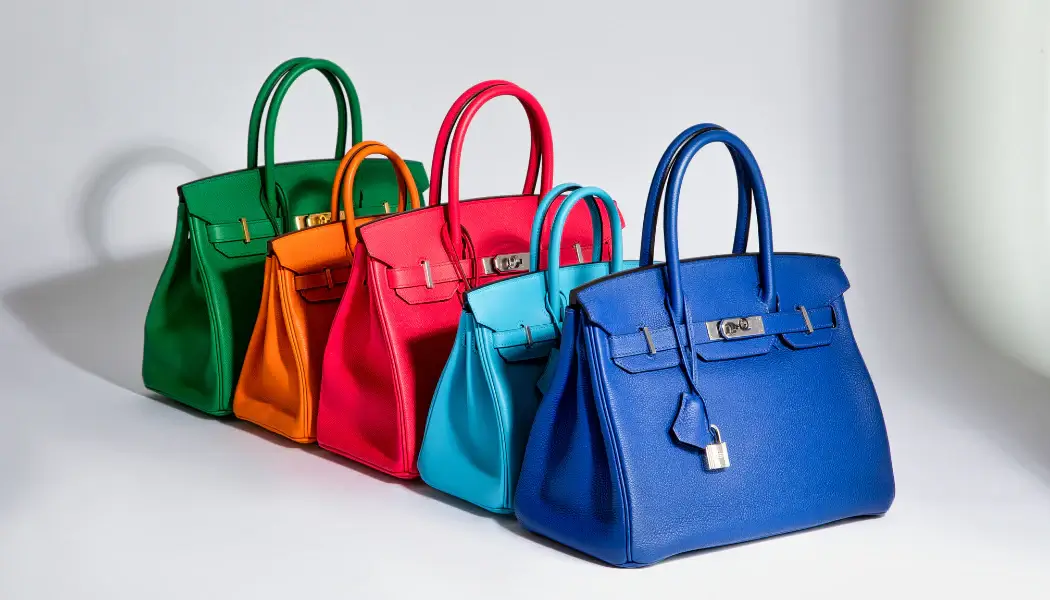
Luxury handbags have transcended their role as mere fashion accessories, evolving into symbols of status, exclusivity, and impeccable craftsmanship. These bags represent a timeless appeal that captivates fashion enthusiasts and collectors alike. Behind every luxury handbag lies a unique blend of design, craftsmanship, and prestige, which collectively contribute to its enduring allure. This article explores the reasons why luxury handbags remain a coveted possession, delving into their evolution, the artistry behind their creation, and their significant cultural impact.
The History and Evolution of Luxury Handbags
The story of luxury handbags begins long before they became the icons they are today. The rise of luxury handbags can be traced back to the early 20th century, when European fashion houses like Louis Vuitton, Chanel, and Hermès introduced their own distinctive designs. These brands, among others, established the groundwork for what would become a thriving industry based on craftsmanship and exclusivity.
In the early days, handbags were seen as practical items for carrying personal belongings, often made from simple fabrics or leather. However, as society’s tastes evolved and luxury goods became more accessible to the wealthy elite, handbags began to take on greater significance. In particular, these high-end bags became a symbol of affluence and social standing. Owning a luxury handbag was no longer just about having a functional accessory—it was a statement of style and success.
Over time, the designs of luxury handbags began to reflect the changing needs of society. While earlier bags were simple, often rectangular or box-shaped, modern luxury handbags are available in a variety of styles and sizes, each carefully designed to cater to the tastes and demands of affluent consumers. Brands began to offer bags that were not only visually striking but also practical, with compartments and organizational features that made them suitable for daily use. The timelessness of luxury handbags lies in their ability to evolve while maintaining their core qualities: exclusivity, craftsmanship, and elegance.
The Art of Crafting Luxury Handbags
What truly sets luxury handbags apart from mass-market options is the meticulous craftsmanship involved in their creation. Creating a luxury handbag is an art form, with each bag often taking hours or even days to complete. The process begins with the selection of premium materials—leathers sourced from the finest tanneries, exotic skins like crocodile and python, and top-quality hardware such as gold or silver-plated zippers and clasps. The materials used are not just chosen for their beauty, but also for their durability and ability to age gracefully.
The artistry behind luxury handbags extends beyond the selection of materials. Skilled artisans are responsible for bringing these designs to life, and their work requires years of training and expertise. Handbag production is often done by hand, with every stitch, seam, and detail carefully crafted. This meticulous attention to detail ensures that each bag is not just an accessory, but a work of art.
The process of handcrafting a luxury handbag is a blend of tradition and innovation. While some brands still rely on age-old techniques that have been passed down through generations, others embrace modern technology to enhance precision and efficiency. However, despite the use of advanced tools and techniques, the core of luxury handbag production remains rooted in time-honored craftsmanship. Each bag is a testament to the skill and dedication of the artisans who create them, with every detail carefully considered to ensure the highest quality.
For example, the iconic Hermès Birkin bag is handcrafted by a single artisan, with each bag taking approximately 18 to 25 hours to complete. This level of dedication to quality is what gives luxury handbags their unmatched reputation. When you purchase a luxury handbag, you are not just buying an accessory; you are acquiring a meticulously crafted piece that has been created with passion, precision, and expertise.
The Status Symbol: Why Luxury Handbags Are So Desirable
The allure of luxury handbags is not only about their craftsmanship but also about the status and prestige they represent. Owning a luxury handbag is seen as a symbol of success and sophistication. These bags are designed to be exclusive, with many brands producing only a limited number of certain models each year. This rarity contributes to the desirability of luxury handbags, as they are not easily accessible to everyone.
The cultural significance of luxury handbags cannot be understated. In many circles, these bags are viewed as status symbols that signify an individual’s wealth, taste, and position in society. Celebrities, influencers, and high-profile personalities often showcase luxury handbags on social media and in public appearances, further fueling their desirability. Seeing these bags carried by well-known figures makes them even more aspirational, as people strive to emulate the lifestyle and success of those they admire.
Furthermore, the exclusivity of certain models makes them highly sought after by collectors. Limited edition bags, vintage pieces, and discontinued designs often appreciate in value over time, turning luxury handbags into valuable assets. This investment aspect adds another layer to their appeal. The idea that a luxury handbag can increase in value over the years makes it more than just a stylish accessory—it becomes a prized possession that can be passed down through generations.
Sustainability and the Changing Landscape of Luxury Handbags
As the world becomes increasingly aware of environmental concerns, the luxury handbag industry is undergoing a shift toward sustainability. Many brands are now focusing on reducing their carbon footprint and embracing more eco-friendly materials. While some of the traditional luxury materials, such as exotic leathers, remain highly coveted, there is a growing demand for sustainable alternatives.
Brands are experimenting with innovative materials such as vegan leather, recycled fabrics, and even plant-based alternatives. These options allow consumers to enjoy the luxury of owning a high-quality handbag without compromising on their ethical values. Additionally, some luxury brands are emphasizing longevity, encouraging customers to invest in timeless designs that can be worn for years rather than fast fashion trends that contribute to waste.
The resale market for luxury handbags has also flourished in recent years, driven by consumers’ desire to own high-end bags at a fraction of the original price. Vintage bags, especially those from iconic brands, have become increasingly popular, offering both sustainability and exclusivity. This trend not only benefits the environment but also allows individuals to access rare or discontinued models that might otherwise be out of reach.
The future of luxury handbags will likely continue to blend innovation with tradition. As the demand for eco-conscious products grows, the luxury handbag industry will adapt to meet the changing needs of consumers while still maintaining the principles of craftsmanship and prestige that have defined these bags for decades.
